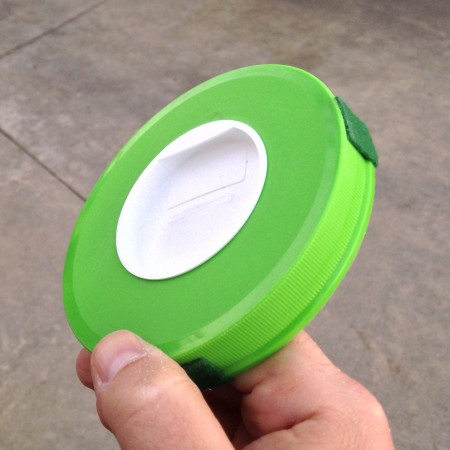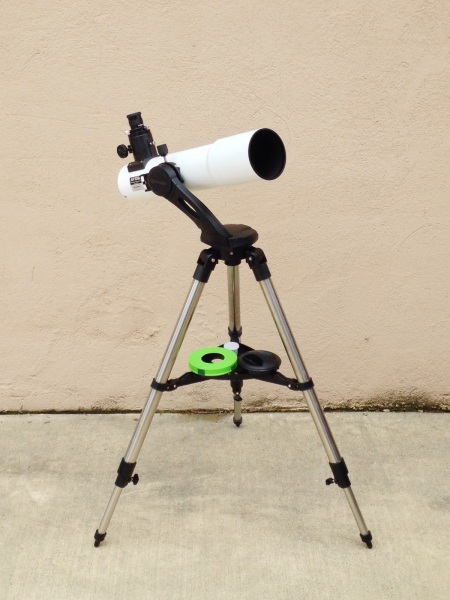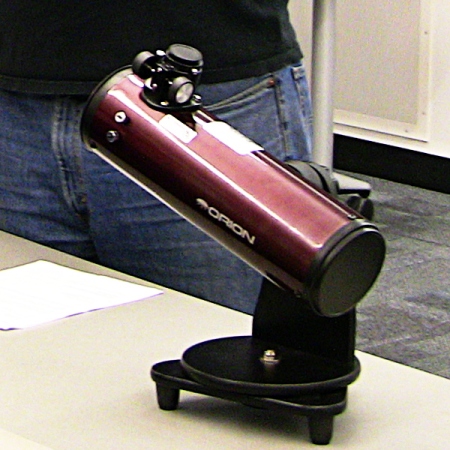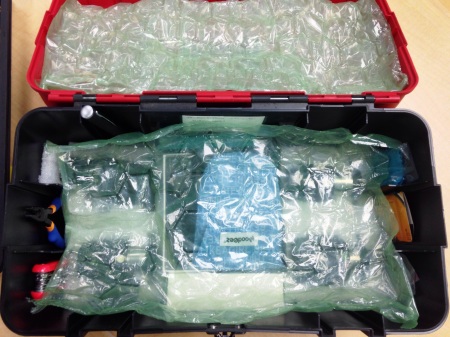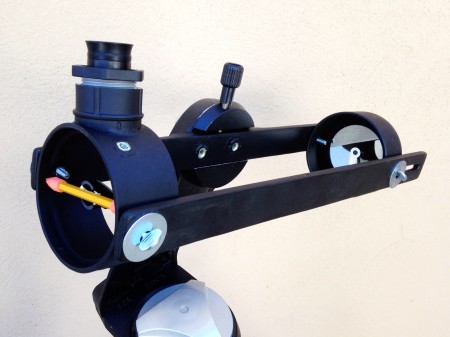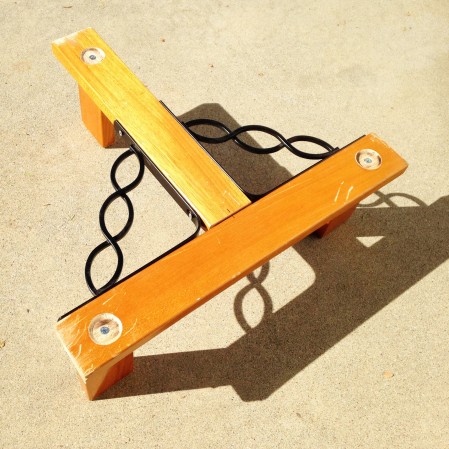I just realized that although I’ve built several AstroMedia kits, I’ve never given them more than a brief mention here and there on the blog. If you’re just here for the link, click here. If you want more info and pix on AstroMedia kits and what it’s like to build them, read on.
AstroMedia is a German company that makes primarily astronomy-related kits. That’s not all they do–they also have kits to build heat engines and musical instruments, and they carry meteorological and physics gadgets like Galileo’s Thermometer and Einstein’s Drinking Bird–but as their name implies, the lion’s share of their products are related to astronomy. That includes not just telescopes, but also a sextant, a handheld spectrograph, a sun movement simulator, a working orrery that includes the Sun, Mercury, Venus, Earth, and the Moon, and other things besides. But also, telescopes, including Galilean, Keplerian, and achromatic refractors, and a Newtonian reflector.
Of the AstroMedia kits that might be used for serious (or at least semi-serious) observing, the ones that stand out are the Plumber’s Telescope, shown here, and the Newtonian Telescope. I have built both. The Plumber’s Telescope is pretty cool: it includes the 40mm objective lens, lenses to make an eyepiece, cardboard mounts for the lenses, and a wooden mounting block for attaching the scope to a tripod. The tube and the eyepiece housing are made from plumbing parts, hence the name of the scope.
I built one of these for London a few years ago–here’s a photo of him using it at the 2014 All-Arizona Star Party. At this remove, I can’t remember if the scope natively accepts 1.25″ eyepieces and accessories, or if I built London’s with that capability. I put in a 45-degree correct-image diagonal to make it more intuitive for him to use. The scope focuses with a sliding drawtube, like an old-time spyglass.
I’ve thought several times about digging this scope out of storage and giving it a whirl from a dark site, but I haven’t actually gotten around to doing that. I talk a lot about small-scope observing, but lately it’s been more mid-scope observing, with the C80ED, SkyScanner 100, and Apex 127. More on that soon, probably.
The mother of all AstroMedia telescope kits is the Newtonian Telescope, shown here in an AstroMedia photo with the optional full-aperture solar filter made with Baader solar film. I built one of these a few years ago, and documented the process in photos, I just never got around to posting about it until now.
The primary mirror is spherical, and as shipped it has a diameter of 70mm and a focal length of 450mm, for a focal ratio of f/6.4. But in the assembled kit, the outer 5mm of the mirror are masked by the telescope’s front aperture and by two additional light baffles inside, which make the operational diameter 60mm, for a focal ratio of f/7.5. This is getting up into the range where spherical mirrors perform almost as well as parabolic ones, and that factor alone might explain the decision to mask the mirror down to 60mm.
I knew right out of the gate that I wanted my scope to be a little stronger than the default cardboard tube, so I got some wooden dowels and punched holes for them in the bulkheads/baffles that separate adjacent tube sections.
Here I did a test fit of the tube, without glue, to figure out how long I needed to cut the wooden reinforcing struts. You can see a page of the instruction manual at the upper left corner. I should say here that the AstroMedia instruction manuals are in English (at least from AstroMediaShop.co.uk), and they are excellent. Very detailed, with illustrations, clearly written by people who have actually built these kits firsthand and recently. In the depressing swamp of crappy telescope instruction manuals, AstroMedia a rare point of light.
Here’s the tube going together.
And the final product. You can see a bit of dowel sticking out the back of the OTA. The primary mirror is glued (or maybe double-sided taped? I can’t remember now) to a hexagonal piece of cardboard that forms the back of the OTA. That piece of cardboard can be left loose, so that fine adjustments can be made to achieve collimation. I went a step further and made a simple collimatable cell, with push-pull collimation using three bits of dowel that stick out of holes on the back of the tube. Friction of the cardboard mirror cell against the walls of the tube are enough to keep the mirror in place once it’s collimated.
Here’s a view down the hexagonal focuser drawtube. The white circle is the reflection of the primary mirror, sitting inside a slightly larger dark square that is the flat secondary mirror on its two-vane cardboard “spider”, and containing a smaller black reflection of the secondary mirror, within which is the black and blue of the case, body, and camera aperture on my old iPhone 5c, which I used to take this photo. As you can see, collimation is not bad; everything is at least roughly in alignment.
The two eyepieces can ride in little carrels on either side of the base. The kit includes 2 eyepieces, a 15mm Ramsden (30x) and a 28mm Steinheil (16x), which is a 3-element eyepiece type I was not previously familiar with. Focus is achieved by sliding the eyepieces up and down in the focuser tube. Possibly 0.965″ eyepieces would work as-is with the scope, although you’d have to be careful about their weight either pushing down the front end of the scope or deforming the tube.
How does it work? The mini-Dobsonian mount works great, as does the straight-through peep-sight finder–at least for the bright stuff that you’ll probably use this telescope to look at. Optically, it has the limitations you’d expect from an obstructed 70mm spherical mirror in a cardboard tube with plastic eyepieces. Which is to say, it’s good enough to demonstrate the principles of a Newtonian reflector, but I’ve not undertaken any serious observing projects with it. It should be good enough for a Messier survey, for someone with sufficient fortitude. For me, it was a fun project and it looks cool on the shelf, but I’m unlikely to press it into service as long as I have more convenient options available. Also, right now the kit goes for about $27 for just the telescope, and $30 for the scope plus solar filter, so you’re not risking much if this sort of thing appeals to you.
I have heard of people buying this kit just for the mirrors, and building mini-reflectors around them using wood, plastic, metal, and more exotic materials. A few years ago I found a webpage where a group of amateur astronomers in Germany all bought these kits and formed a “70mm club”, with each person building their own take on a 70mm reflector. There were some really creative designs on that page, which to my intense irritation I can no longer locate (if you know if it or find it, please let me know in the comments!). So if you’re in the market for small Newtonian optics for a STEM project or demonstration, this kit is an inexpensive way to get a decent primary and secondary mirror set, whether or not you build it as shown.
Verdict? You have to look around a bit to get a good Plossl eyepiece for the cost of this kit, which gives you a whole working telescope. I’m a big fan of people either buying cheap astro gear and taking it apart, or building their own–even if the results are ugly, as mine often are–both to understand the principles of astronomical optics better, and to demystify the process for the day when they need to take apart a scope they care about, either to clean it or repair it. Plus this one is fun and the results are pretty cool. Recommended. Here’s the general AstroMediaShop homepage (link), the one specifically on this and other telescopes (link), and the one on the package with this scope and the solar filter (link).

If you have built this and want a step up, or want something like this without having to build it, the Orion SkyScanner 100 is a serious piece of kit that will show you a lot for about $100. Its elder sibling, the StarBlast 4.5
, is a little bigger, a little easier to use, and a little more nicely appointed. You really can’t go wrong with either one.
















